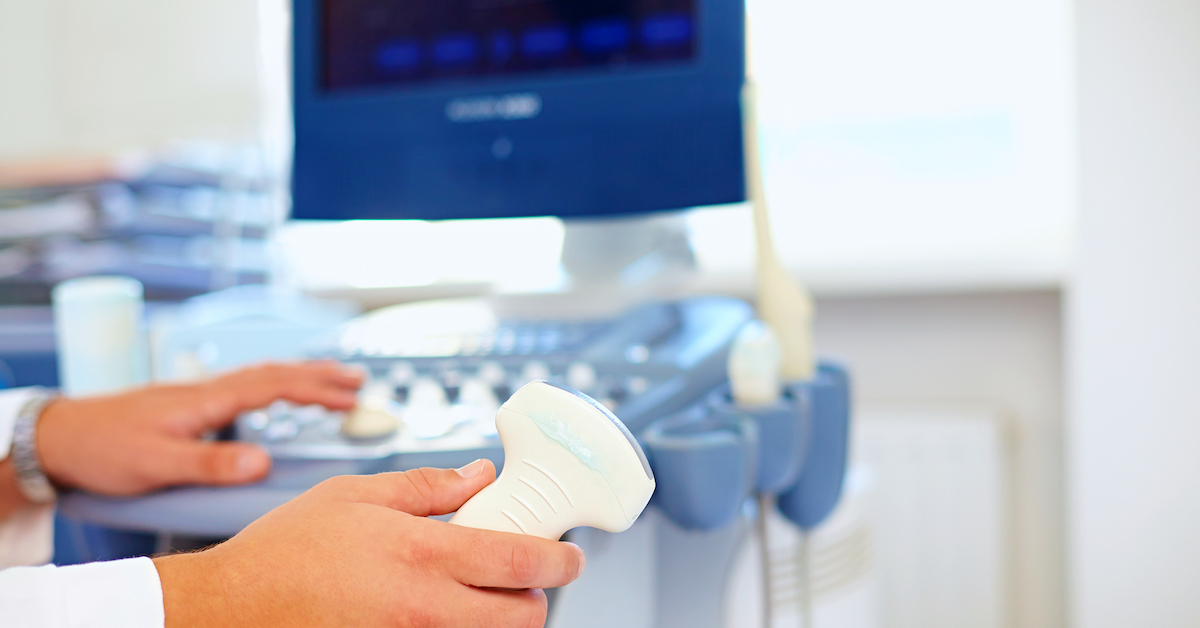When you hear the word ultrasound, you might think of a medical imaging system and a pregnant woman looking at images of her unborn baby at a doctor’s office.
But there’s another type of ultrasound that’s causing waves in medical research. It’s called “focused” ultrasound.
Focused ultrasound is showing promise in helping doctors perform medical procedures inside the body without invasive surgery. One of the most exciting medical uses for focused ultrasound is to “operate” on the brain.
Ultrasound relies on the same kind of sound wave energy as noise that you can hear, however, at a higher pitch than the human ear can detect.
Focused ultrasound magnifies these sounds, similar to the way a magnifying glass focuses light, but the ultrasound focuses sound energy into a certain part of the body.
Operating with Beams of Sound
Right now, the Food and Drug Administration (FDA) has only approved the use of focused ultrasound to treat tremors caused by Parkinson’s disease, as well as prostate tumors. But researchers at the University of Virginia (UVA) believe focused ultrasound will soon offer a new way to ease a wider variety of Parkinson’s symptoms in people who, for various reasons, can’t undergo brain surgery.1 Much of their research has involved the subthalamic nucleus, a part of the brain that’s involved in controlling movement.
“This small brain region, the subthalamic nucleus, had a very strong and potent effect on Parkinsonian symptoms when we targeted it with precise, focused ultrasound energy,” says researcher Dr. Jeff Elias, a neurosurgeon who has led several of the ultrasound studies.
According to Dr. Elias, focused ultrasound can help stop the effects of Parkinson’s by interrupting faulty brain circuits and eliminating malfunctioning tissue. During the procedure, the ultrasound’s effects can be monitored with MRI (magnetic resonance imaging).
While focused ultrasound treatment appears to work well, there are side effects. Dr. Elias’ tests reveal treatment can cause muscle weakness, unwanted movement, speech problems and walking difficulties. For most people, these side effects are temporary but for others they can persist for a prolonged time.
“The key for the ultimate adoption of this new procedure,” explains Dr. Elias, “will be further refinements of the technology to ensure reliability and safety.” He and his team are currently investigating how to reduce side effects or avoid them all together.
Crossing the Blood-Brain Barrier
Other research into focused ultrasound treatment of the brain has centered on how it affects the blood-brain barrier, the protective tissue that keeps certain substances, toxins, pathogens and other threats from traveling directly from the blood stream into brain tissue.
The studies in this area, some of which are also underway at the University of Virginia, are examining ways to use ultrasound to create temporary, targeted, small breaches in the blood-brain barrier. These breaches would allow medical treatments, like certain drugs or gene therapy, to be delivered to localized, very specific parts of the brain.2
“The blood-brain barrier is one of the greatest, if not the greatest, challenge to drug delivery for the central nervous system,” says researcher Richard Price. “Evolution gave us this barrier because the central nervous system needs to be protected. The problem is now we want to deliver something to those cells and evolution has had millions and millions of years to optimize a solution to stop it… So I’m attempting to circumvent biology with physics.”
Hope for Alzheimer’s Sufferers and Brain Cancer Patients, Too
Dr. Price believes focused ultrasound could one day be used to treat brain tumors with “deep penetrating nanoparticles” and destroy their cancer cells.
Focused ultrasound could also potentially be used to treat Alzheimer’s disease. Tests in Canada are looking at how the therapy can improve the delivery of immunoglobulin to the hippocampus (one of the brain’s memory centers) and increase the brain’s ability to grow new neurons in patients with the disease.3
All of these possible applications may herald a number of new ways to treat the brain non-invasively, although their practicality, in some instances, needs to be refined. But if these focused ultrasound treatments can be perfected – and medical researchers are betting that they eventually can – it will be a huge boon to brain health. I’ll keep you posted on any new developments.







